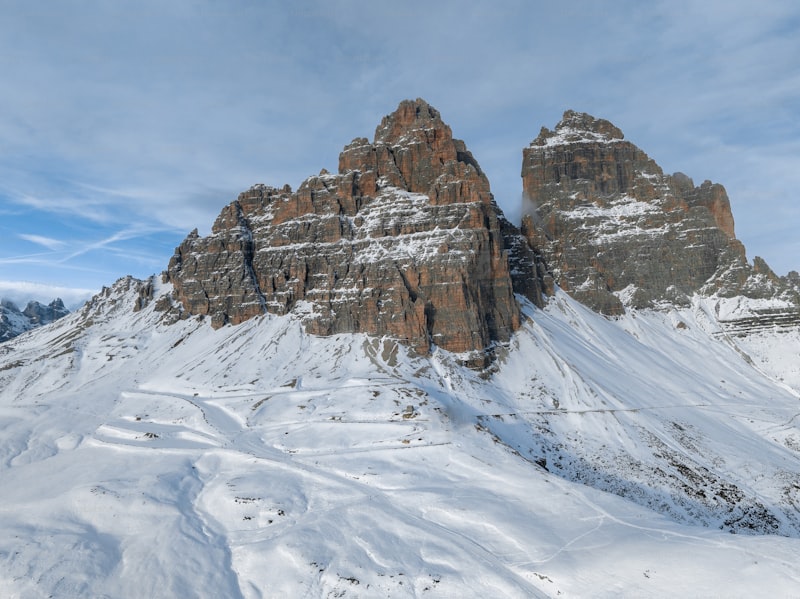Alpine flora and fauna exhibit remarkable adaptations to survive in harsh mountain environments. These adaptations are like nature’s masterpieces, finely tuned to conquer challenges like extreme temperatures, thin air, and rocky terrain.
Let’s start with the plants. Imagine walking through an alpine meadow where vibrant flowers bloom against a backdrop of rugged peaks. These plants aren’t just pretty; they’re survivors. To thrive at high altitudes, alpine flora have evolved unique traits. Some grow close to the ground in cushion-like formations, reducing exposure to harsh winds and conserving heat. Others have developed deep root systems to anchor themselves in rocky soil and access moisture. These adaptations not only help them survive but also thrive in an environment where conditions can change in an instant.
And then there are the animals. From elusive mountain goats to the hardy marmots, alpine fauna have their own set of adaptations. Take the mountain goat, for example. Its strong hooves provide excellent traction on steep slopes, allowing it to navigate rocky terrain with ease. Thick fur insulates them against freezing temperatures, while their ability to climb high cliffs keeps them safe from predators. Similarly, marmots are experts in digging burrows below the frost line, where they hibernate during the long, cold winters. These adaptations are crucial for their survival in an environment where resources are limited and conditions are unforgiving.
But it’s not just about surviving; it’s about thriving against all odds. Alpine flora and fauna have adapted over millennia, each species finding its niche in this extreme ecosystem. These adaptations are not just biological traits; they are testaments to the resilience and ingenuity of nature itself.

Next time you find yourself in the mountains, take a moment to marvel at the adaptations of alpine flora and fauna. They are living proof that life finds a way, even in the most challenging of environments.
Surviving Thin Air: How Alpine Flora and Fauna Adapt to High Altitudes
Imagine a world where the air is thin and the conditions harsh—this is the realm where alpine flora and fauna thrive. High-altitude environments present extreme challenges, from freezing temperatures to low oxygen levels, yet life not only exists but thrives in these rugged landscapes.
Plants in the alpine regions have evolved unique adaptations to survive. They often grow close to the ground, hugging rocky crevices where they are sheltered from the relentless winds. Their leaves are small and waxy, reducing surface area and water loss in the dry, cold air. Some plants, like the Edelweiss, have developed dense, woolly hairs that insulate against the cold and protect from intense UV radiation at high altitudes.
Flora also exhibit remarkable resilience in their ability to bloom quickly during the short summer season. They capitalize on the brief period of warmth and sunlight by flowering rapidly and producing seeds before winter returns.
Meanwhile, alpine fauna have also adapted ingeniously to survive these harsh conditions. Creatures like the Himalayan Tahr, with its thick fur coat, are built to conserve body heat. Migratory birds such as the Bar-headed Goose undertake incredible journeys over the world’s highest peaks, relying on efficient oxygen utilization and precise navigation.
At such heights, every adaptation is crucial for survival. Animals often have larger lungs and more efficient cardiovascular systems to cope with the reduced oxygen availability. The elusive Snow Leopard, a master of stealth in the rocky terrain, hunts agile prey like the Blue Sheep, perfectly adapted to its challenging environment.
Nature’s Extremists: Incredible Adaptations of Alpine Plants and Animals
Alpine plants, like the Edelweiss flower, have developed remarkable adaptations to cope with the extreme cold, thin air, and intense sunlight found at high altitudes. Their dense, woolly leaves and low, cushion-like growth forms help them conserve heat and resist freezing temperatures. These adaptations not only protect them from the cold but also reduce water loss, crucial in the dry, windy environments of the mountains.
Similarly, animals in alpine regions, such as the mountain goat, exemplify nature’s ability to adapt to extreme habitats. These nimble climbers boast strong hooves for gripping steep cliffs, allowing them to navigate the rocky terrain with ease. Their thick fur coats provide insulation against freezing temperatures, while their large lungs and strong hearts efficiently process the thin, oxygen-deprived air found at high altitudes.
Moreover, the elusive snow leopard is another marvel of adaptation in the alpine ecosystem. Its thick fur patterned with rosettes offers camouflage amidst snow-covered landscapes, aiding in hunting and evading predators. With powerful hind legs and a long, muscular tail for balance, the snow leopard is an agile predator, capable of leaping up to 50 feet in a single bound across rugged terrain.
These adaptations aren’t just survival strategies; they are feats of evolutionary brilliance, honed over millennia. They demonstrate nature’s capacity to thrive even in the harshest environments, where only the most resilient species endure. From the hardy plants clinging to rocky outcrops to the agile animals navigating icy cliffs, alpine ecosystems epitomize the ingenuity and resilience of life on Earth.
Explore deeper into these high-altitude realms, and you’ll discover a world where every adaptation tells a story of survival against the odds, where the extremes of nature meet the boundless creativity of evolution.
From Furry Coats to Tiny Leaves: Evolutionary Marvels in Alpine Adaptations
Imagine standing atop a rugged mountain peak, surrounded by plants that seem almost otherworldly in their resilience. These plants have not just adapted; they’ve mastered survival in extreme conditions. Take, for instance, the cushion plants. These low-growing marvels form dense, rounded cushions that hug the ground. Their compact shape minimizes exposure to biting winds and conserves heat—a clever strategy to endure freezing temperatures and relentless storms.
Then there are the furry coats of alpine mammals like the mountain goat. These thick, insulating layers of fur keep them warm amidst biting cold. Each strand of fur acts as a barrier against the icy winds, trapping air close to their bodies and providing natural warmth. It’s like wearing a cozy jacket tailored by nature itself.
But it’s not just about warmth. Alpine plants also show ingenuity in their leaves. Instead of large, water-draining surfaces, many alpine species boast tiny, needle-like leaves. These diminutive structures reduce water loss through evaporation, crucial in environments where moisture is scarce and precious. Each leaf is a miniature masterpiece, designed for efficiency and survival.
Nature in the alpine regions is a testament to adaptation’s boundless creativity. It’s a canvas where every stroke—every furry coat, every tiny leaf—tells a story of resilience and evolution. These marvels of adaptation aren’t just biological wonders; they’re living examples of nature’s ingenuity, proving that even in the harshest conditions, life finds a way.
Secrets of Resilience: Discovering the Adaptive Strategies of Alpine Wildlife
Alpine wildlife faces extreme challenges such as freezing temperatures, thin air, and scarce food sources. Despite these adversities, they have adapted remarkable strategies to not just survive but thrive in their habitats.
One of the key secrets lies in their physical adaptations. Take the majestic snow leopard, for instance. Its thick fur coat not only provides warmth but also camouflages it against snowy landscapes, making it a stealthy predator. This adaptation allows it to conserve energy while hunting in its sparse habitat.
But resilience isn’t just about physical prowess—it’s also about behavioral flexibility. Alpine wildlife, like the ibex and mountain goats, demonstrate extraordinary agility and sure-footedness. Their ability to traverse steep cliffs and rocky terrains showcases their adaptive behavior honed through generations.
Another fascinating aspect is their metabolic adaptations. Creatures like the pika have evolved to efficiently use energy, allowing them to survive on sparse vegetation found at high altitudes. Their ability to lower their metabolic rate during periods of scarcity helps them endure harsh winters when food is scarce.
Moreover, social resilience plays a crucial role in their survival. Alpine birds such as the ptarmigan form flocks during winter, providing warmth and safety in numbers. This social cohesion not only enhances their chances of survival but also fosters a sense of community among these resilient creatures.
In essence, the secrets of resilience in alpine wildlife are a testament to the wonders of nature’s adaptation. From physical attributes that aid survival to behavioral flexibility and social cohesion, these creatures have honed their strategies over millennia to thrive in some of the planet’s most challenging environments. Their resilience inspires awe and serves as a reminder of the incredible adaptability of life itself.
The Alpine Arms Race: Evolutionary Battles Among High-altitude Species
At these lofty heights, where oxygen is scarce and temperatures plummet, every advantage counts. Take, for instance, the majestic snow leopard, a master of stealth and agility. Its thick fur and padded paws allow it to traverse icy slopes effortlessly, while its keen senses and camouflage coat make it a formidable predator in the snowy terrain. In contrast, the Himalayan blue poppy, with its vibrant blue petals, has evolved to attract pollinators amidst the barren, rocky landscapes where few other plants thrive.
Yet, survival at altitude isn’t just about physical prowess. The bar-headed goose exemplifies this with its epic migrations over the Himalayas, reaching heights of over 29,000 feet. This feat is made possible by its unique physiology, which includes enlarged lungs and blood vessels capable of delivering oxygen efficiently in thin air, setting it apart as one of the world’s highest-flying birds.
Meanwhile, the Himalayan yak, with its dense fur and stocky build, embodies resilience against biting cold and sparse vegetation. Its ability to extract nutrients from tough, fibrous plants enables it to thrive where other grazers would struggle. This adaptation highlights the evolutionary arms race’s role in shaping not just survival, but dominance in extreme environments.

In the end, ‘The Alpine Arms Race’ reveals nature’s ongoing quest for supremacy in some of Earth’s most challenging habitats. Each species, from the elusive snow leopard to the hardy Himalayan yak, represents a chapter in an evolutionary saga marked by adaptation, innovation, and the relentless pursuit of survival amidst breathtaking altitudes and unforgiving conditions.
Innovations Above the Clouds: Remarkable Adaptations in Alpine Biodiversity
Adaptation is key in these high-altitude ecosystems. Plants like Edelweiss and Alpine Aster have evolved dense, woolly coverings to trap heat and protect against fierce winds. These adaptations not only ensure survival but also contribute to the intricate balance of the ecosystem.
Animals in alpine regions display equally remarkable traits. The Ibex, with its sturdy hooves and keen climbing skills, navigates steep cliffs effortlessly. Its ability to thrive in such harsh conditions illustrates nature’s ability to overcome challenges through specialization.
But it’s not just flora and fauna that adapt—microorganisms play a crucial role too. Cyanobacteria, for instance, form colorful mats on rocks, contributing to soil formation and nitrogen fixation, essential for sustaining life at higher altitudes.
Human impact also shapes alpine biodiversity. Sustainable tourism and conservation efforts are crucial in preserving these delicate ecosystems. Balancing human activities with environmental protection ensures future generations can marvel at the same biodiversity we enjoy today.
Innovations continue to emerge, aiding scientists in understanding and conserving alpine biodiversity. From genetic studies revealing adaptation mechanisms to technological advances in monitoring climate change impacts, our knowledge deepens, fostering a greater appreciation for these high-altitude marvels.
Frequently Asked Questions
How are alpine flora and fauna affected by human activities and climate change?
Learn how human activities and climate change impact alpine flora and fauna, exploring changes in habitats, species migration, and adaptation challenges.
What are some examples of unique adaptations seen in alpine animals?
Explore examples of unique adaptations in alpine animals, highlighting specialized traits like thick fur for insulation, enlarged lungs for oxygen efficiency, and strong claws for navigating rugged terrain.
How do alpine plants survive in low oxygen and harsh weather conditions?
Discover how alpine plants survive in low oxygen and harsh weather conditions. Learn about their unique adaptations, including specialized root systems for efficient nutrient absorption, small size to minimize heat loss, and thick waxy coatings to retain moisture and protect against wind and cold.
How do alpine species cope with extreme temperature variations?
Learn how alpine species survive extreme temperature changes in their habitats. Discover their unique adaptations that help them thrive in harsh mountain environments.
What are adaptations and why are they important for alpine flora and fauna?
Discover why adaptations matter for alpine flora and fauna. Learn how these specialized characteristics help organisms thrive in harsh mountain environments, ensuring survival amidst extreme conditions like low temperatures and high altitudes.


